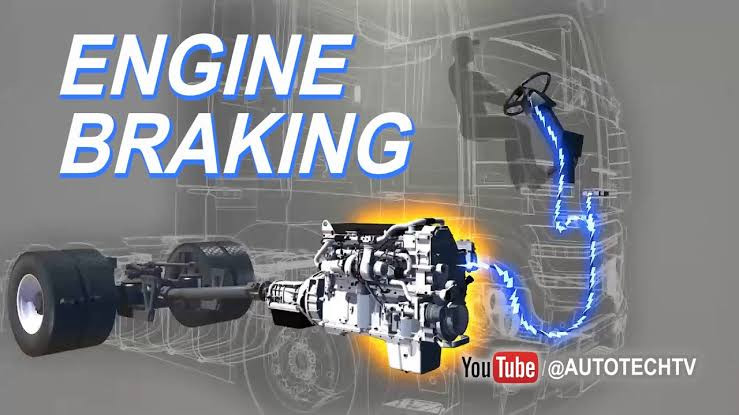Engine braking is a valuable technique used by drivers to slow down a vehicle without relying solely on the brakes. While commonly associated with manual transmissions, it can also be effectively utilized in automatic transmissions.
Ever felt the need for a little extra control while navigating downhill stretches? Engine braking, a technique that utilizes the engine itself to slow down the vehicle, can be your secret weapon. But does it work with automatic transmissions? Absolutely! Let's explore the world of engine braking and explore how to leverage it effectively in your automatic car.
Engine Braking
Imagine your engine as a giant air pump. Engine braking essentially harnesses the resistance created by this pumping action to slow down the car.
During engine braking, the throttle valve is closed, restricting airflow to the engine. This creates a vacuum within the engine, leading to increased resistance against the pistons' upward movement. As a result, the vehicle slows down due to the engine's braking effect.
Here's the basic principle:
- Lifting Your Foot: By taking your foot off the gas pedal, you disconnect the engine from the drive wheels. However, the engine continues to spin due to inertia.
- Vacuum Effect: As the engine continues to rotate, it creates a vacuum effect in the intake manifold. This vacuum tries to pull air through the closed throttle valve, essentially resisting the engine's rotation.
- Transmission Connection: Even though disconnected from the drive wheels, the engine is still connected to the transmission. This resistance is then transmitted through the drivetrain, creating a braking effect that slows down the vehicle.
Putting Theory into Practice
While typically associated with manual transmissions, engine braking can also be beneficial in automatics. Here's how to use it effectively:
- Utilize Lower Gears: Some automatic transmissions offer a "Low Gear" or manual shift mode. Engaging a lower gear increases engine resistance, providing a more pronounced engine braking effect. Consult your owner's manual for specific instructions on using manual modes in your car.
- Downshifting with Paddle Shifters: If your car has paddle shifters, use them to manually downshift while approaching a downhill section. This will engage a lower gear and increase engine braking. Remember, downshifting at high speeds can be dangerous, so exercise caution.
Advantages and Disadvantages of Engine Braking
Advantages:
- Reduced Brake Wear: Engine braking lessens reliance on the traditional brakes, extending their lifespan and improving fuel efficiency.
- Enhanced Control Downhill: Engine braking provides a more controlled descent on steep inclines, reducing reliance solely on the brakes.
- Smooth Gear Transitions: In some cases, engine braking can help with smoother gear changes, especially in older automatic transmissions.
Disadvantages:
- Limited Braking Power: Engine braking alone isn't as powerful as traditional brakes for emergency situations. Always prioritize using your brakes for complete control.
- Less Effective at High Speeds: Engine braking becomes less effective as vehicle speed increases. Don't solely rely on it at highway speeds.
- Potential for Jerking: Improper downshifting or engine braking at high RPMs can cause jerky gear changes. Practice smooth transitions for a comfortable driving experience.
Engine braking has been around since the early days of automobiles, even before the invention of modern braking systems. It was a crucial technique for drivers to control vehicle speed, particularly on downhill slopes. As braking systems evolved, engine braking became less essential for stopping a car completely. However, its role in enhancing control and reducing brake wear persists to this day.
Conclusion
Engine braking, while not a substitute for your brakes, offers a valuable technique for automatic transmission drivers. By understanding its principles and applying them effectively, you can gain more control over your vehicle on descents, reduce brake wear, and experience a smoother driving experience, especially in hilly terrains. Remember, practice safe driving habits and prioritize your brakes for complete control when necessary. So, the next time you encounter a downhill stretch, consider using engine braking to navigate with confidence and efficiency.

Comments (0)
Please login to join the discussion
Be the first to comment on this article!
Share your thoughts and start the discussion